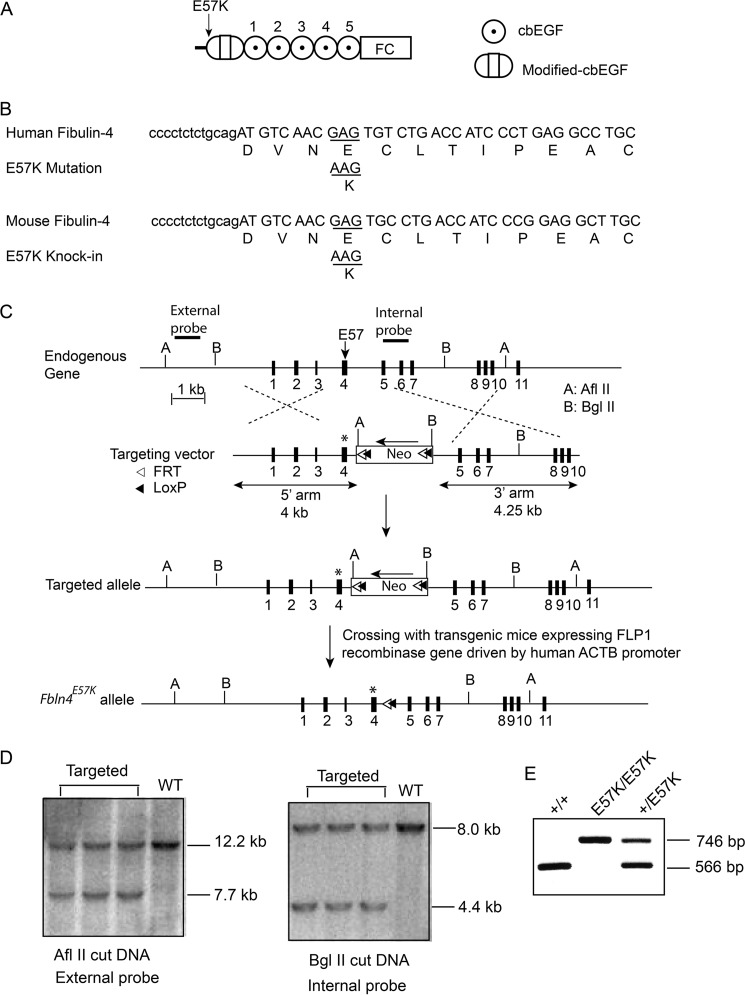FIGURE 1.
Generation of a mouse model with fibulin-4 E57K mutation. A, modular structure of fibulin-4. FC, fibulin-type C terminus. Modified cbEGF domain contains an insertion of 28 amino acids. The E57K mutation is located in the N terminus of the modified-cbEGF domain. B, nucleotide and amino acid sequences of the human and mouse fibulin-4 genes surrounding the E57K mutation, which is located in the beginning of exon 4. Intron sequences are shown in lowercase letters. A G → A point mutation results in E57K substitution in both humans and mice. C, targeting strategy. The gene targeted region corresponds to exon 1–10 (exons shown as black boxes) of the wild type Fbln4 allele; amino acid residue Glu-57 (E57) is encoded by exon 4. The external and internal probes used for Southern blotting of electroporated mouse embryonic stem cells and key restriction enzymes sites are shown. In the targeting vector, a G → A mutation is introduced in exon 4 (shown as an asterisk), resulting in E57K substitution. A loxP/FRT flanked-pGK-gb2-Neo cassette is inserted in intron 4 in the opposite direction of Fbln4 transcription. Homologous recombination generates the targeted allele containing the pGK-gb2-Neo cassette in the intron. Crossing mice harboring the targeted allele with transgenic mice bearing FLP1 recombinase gene results in the knock-in allele, Fbln4E57K. D, screening of electroporated ES cells by Southern blotting using external and internal DNA probes. E, genotyping by PCR to identify Fbln4+/+, Fbln4+/E57K, and Fbln4E57K/E57K mice.

